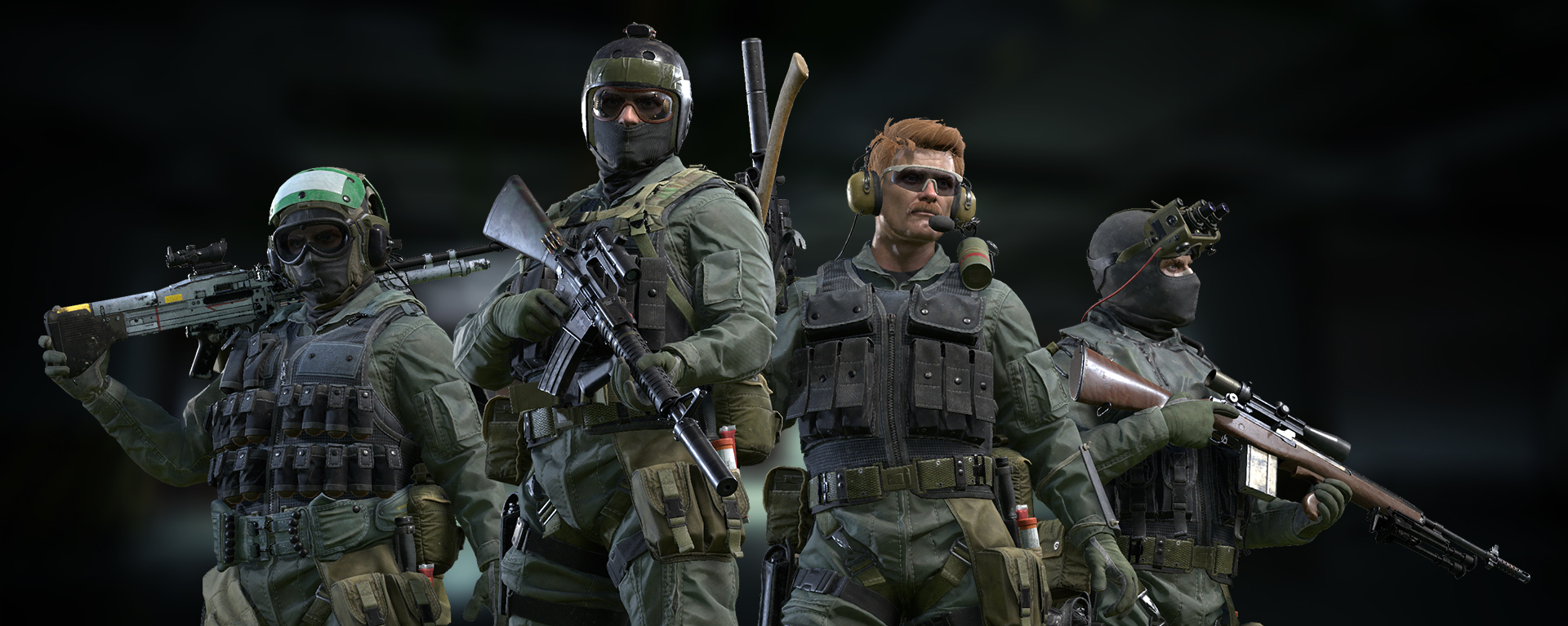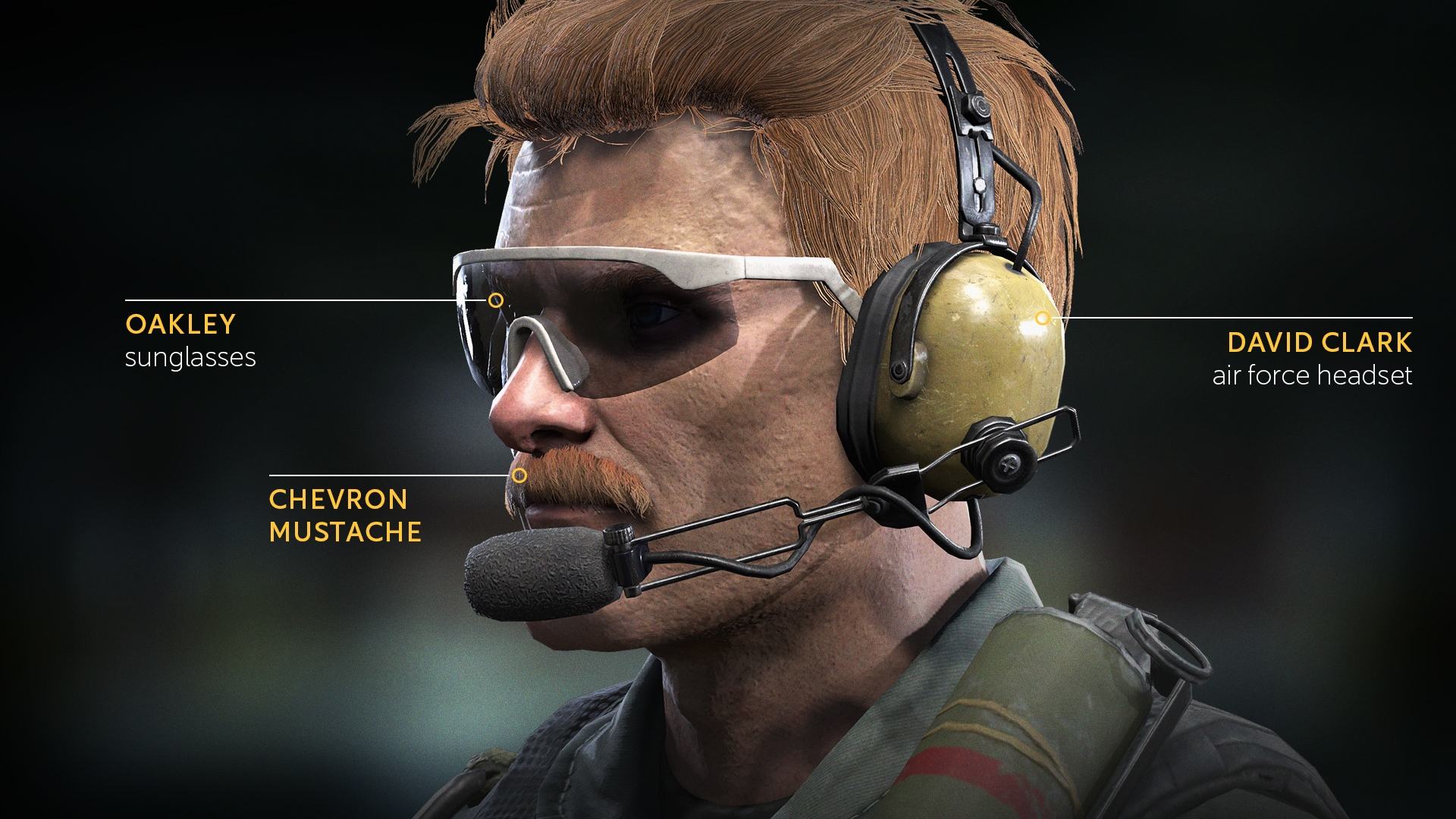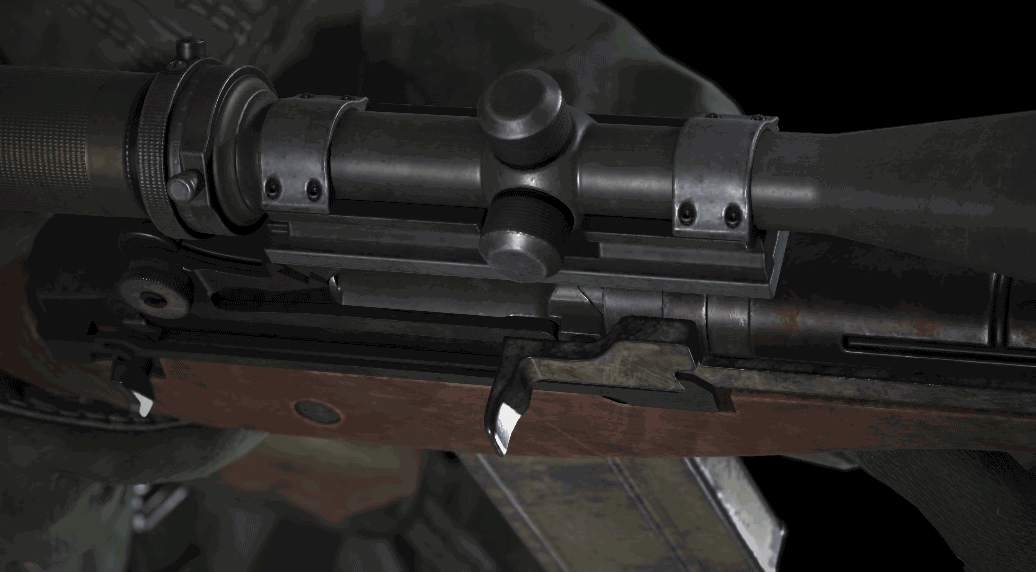Caliber’s consultants and artists again indulge in nostalgia for the former times’ diversity of the world’s special forces’ appearance. A test ran a few months ago, when the legendary Afghan outfit for the 22SpN collection appeared in the game, showed that the players are interested in historical outfits. Now is the time for a new update of an operator collection look. This time, in the spirit of the 90s era in the US Navy.
This is the legendary SEAL outfit, recreated to the smallest detail based on SEAL Team 8 that participated in the exercises in the Red Sea during Operation Desert Storm.

The world of modern technologies depersonalizes the appearance of law enforcement officers. The ubiquitous MultiCam camouflage pattern, the outwardly identical ballistic helmets and protective equipment, and complete unification of weapon systems.
Sometimes, looking at the next photoset from some competitions, one thinks that it would be difficult to understand which units participated in the competition if it were not for the patches and stripes. There is no „zest“ and individuality anymore.
We adhere to the course of diversity, and for inspiration, we increasingly turn our eyes to the „good old“ past.
Alexander Savinov, historical consultant for Caliber.
At the turn of the 90s of the last century, in the wake of the events in the Persian Gulf, the SEALs were tasked with being ready to participate in VBSS (visit, board, search, and seizure) maritime operations. Such operations meant not a simple seizure of a ship but a lightning-fast boarding and inspection of a ship that could transport contraband or weapons. Navy SEAL operators had to carry out such boardings in any weather and time of day and be ready for contact with ships’ armed guards.
So, it’s 1991. SEALs are not yet trendsetters, and hundreds of private companies do not work for the US Armed Forces yet, which means it’s time for homemade equipment. During naval operations, Navy SEALs use Nomex fire-resistant flight suits: they are lightweight, durable and protect from temperatures up to four hundred degrees Fahrenheit. Since boarding a moving vessel is in itself risky, anti-shock protection is needed. At the time, Pro-Tec Full Cut sports equipment, particularly the helmet, was perfect for this — all of a sudden. However, in some cases, the helmets of the deck personnel were „requisitioned“.
If you are into cosplay or historical reenactment, modern Pro-Tec Full Cut gear (similar to that from the 90s) is still sold in sports stores.
The reinforced tape was king for the Navy SEAL of the time. It is resistant to tearing and penetration and does not lose its adhesive properties in a humid environment, so it was used very often. They attached their gadgets to their helmets, sealed ventilation holes (skaters need them, but operators not always), and found many more uses for it.
Don’t your operators need headsets to communicate? But hey, the era of active radio headphones has not yet arrived. Therefore, the special forces took classic aviation headsets by David Clark and, using soldered adapters, connected it to Motorola MX300R radio stations. And to protect the eyes from the sun, they simply took their own favorite model of glasses. Monk got his hands on the then fashionable Oakley.

Given the action on the high seas, SEAL operators were equipped with compact life jackets. One of the variants, the LPU-23, was borrowed from the pilots of carrier-based aircraft. However, the weapons also did not go without hand-made improvements: the front handle was installed on the rifles for ease of holding. Since there was no standard solution for M14 and M16, the operators bolted the handles from Thompson submachine guns, M60 machine guns, and AR-15 from stock reserves as foregrips. As a last resort, a wooden block and the operator’s ability to handle a knife were used.
Of course, there were ready-made solutions, too: small-series TP-1E bulletproof vests, and AN/PVS-5A night vision goggles, as well as modular load-bearing vests and ABA holsters and belts with pouches from the legendary army 1974’s ALICE system. But all this equipment was changed, hemmed, and the output was literally a „piece good.“

Based on the exercises and practicing the tactics of the boarding teams, another hand-made item was created: the SEAL Combat Boarding Manual printed on a typewriter by the operators themselves. It was an instruction that meticulously prescribed the equipment options, the amount of ammunition needed for specific tasks, the various deck layouts of ships, the order of taking positions, the rules for examining the premises. And all this was supplied with black and white photos in which the SEALs were posing. The brochure was copied and passed on from detachment to detachment, from veterans to newcomers.
And who's to blame? Such was the spirit of the age.